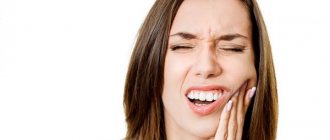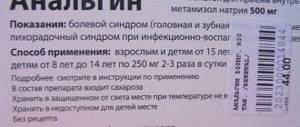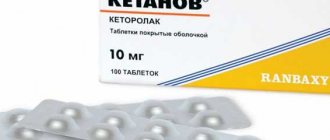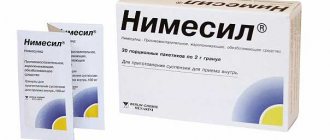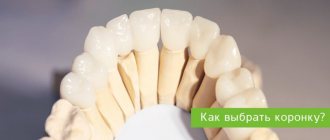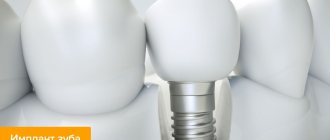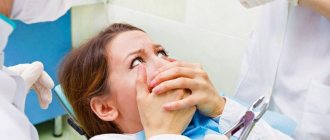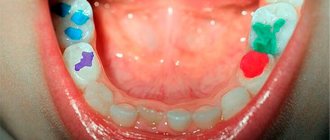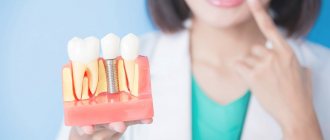Toothache has different manifestations and causes. Carious destruction of enamel, trauma, damage to the mucous membrane, gum disease and even the eruption of permanent units can provoke discomfort, cause fever and general ill health. While waiting for an appointment with a doctor and an accurate diagnosis, parents should be able to conduct an independent diagnosis - calm the baby and provide first aid. To do this, it’s worth figuring out why and what to do if a child at 3-4 years old has a toothache.
Can a child’s baby teeth hurt: dental problems in children
Parents often ask: can baby teeth hurt in a 2-5 year old child? The answer from dentists in this case is always positive. Baby teeth are also susceptible to caries, just like permanent teeth. Moreover, superficial caries can quickly develop into deep caries - causing pulpitis and periodontitis.
Although caries is the main answer to the question “can baby teeth hurt in a 4-year-old child,” there are other dental diseases that provoke complaints in a child. Among them:
- enamel erosion;
- dental hypersensitivity;
- mechanical tooth trauma;
- stomatitis;
- gingivitis;
- periodontitis.
Gum diseases and mucosal ulcers are also included in this list, since a 3-5 year old child will say that his teeth hurt, and will not indicate the true problem.
Massage points on the face
How to find:
to the Jia Che point (see above) add two more symmetrical points, which are at the level of the earlobes, not reaching them 3 centimeters.
How to massage:
lightly touch with your index finger 10 times - first on one pair of points, then on the other.
To help parents: home diagnostics based on the nature of pain and indirect symptoms
Children often complain of toothache, including any discomfort in the oral cavity in this category. The task of parents is to understand what worries the child. A small cheat sheet on dental diseases will be an assistant in diagnosis:
- Caries. At the initial stage, it is noticeable in the form of white matte spots, which gradually darken to brown or black with the formation of holes. Pain manifests itself when there is pressure on a tooth, when pieces of food enter the carious cavity, or as a reaction to cold or hot.
- Pulpitis. It is not always accompanied by severe pain, although with significant nerve damage, the disease causes severe anxiety in the child. External signs are swelling of the soft tissues around the diseased unit, a change in the shade of the tooth.
- Periodontitis is the next stage of the disease with advanced pulpitis. A lump forms on the gum. The pain is sharp, especially when touching a tooth.
- A fistula is a small bubble on the gum, usually under a filled tooth. A symptom that pus has accumulated in the inflamed area and requires release. The pain is temporary and not permanent. Without treatment, there is a high probability of damage to the rudiments of the radical units, so a visit to the dentist is a necessity.
- Flux is an inflammatory process of the periosteum, accompanied by swelling on one side of the face and severe pain in the tooth. A sharp rise in temperature is possible.
- Enamel erosion is a non-carious darkening of the tooth surface that occurs as a result of poor hygiene or an unbalanced diet. Pain occurs as a response to irritating factors - hot food, cold drinks.
- Stomatitis is painful sores, white plaque or pimples in the mouth. In advanced cases, there is general malaise and fever in the child.
- Gingivitis and periodontitis are inflammation of the gums with severe swelling and redness. The pathological process is accompanied by pain and tooth mobility.
- Teething can be painful, both in very young children and in school-age children when molars appear. Signs of the eruption of baby and permanent molars are swollen gums, increased salivation, poor sleep, temperature fluctuations.
Rodikova Tatyana
Parents do not believe that teething in schoolchildren can be very painful. Especially if the first teeth grew easily and imperceptibly. I would like to note that molars can take a long time to erupt - with fever, swelling and refusal to eat. If your child experiences these symptoms, it is worth making an appointment. The doctor will accurately assess the baby’s condition and suggest how to facilitate the growth of new teeth.
What are the symptoms of caries?
Symptoms of caries directly depend on its stage, that is, on how deep the damage is.
- Spot stage.
The earliest stage of caries development is practically asymptomatic. Nothing bothers the person, there is no hole in the tooth, but the process of demineralization of the enamel has already begun. This is indicated by a small white spot. Of course, at the early stage of caries the temperature does not rise.
- Superficial caries.
This is the stage when a hole appears in the tooth, but it is still concentrated in the enamel area and has not spread to the dentin. The doctor can easily detect a defect in the tooth surface during a visual examination. At this stage, pain may occur in response to irritants (hot or cold, sweet or salty food), and the sensitivity of tooth enamel may increase. Body temperature is normal.
- Average caries.
It is characterized by periodic pain and a carious cavity, which is easy to feel even with the tongue. As in earlier stages, with average caries the temperature does not rise.
- Deep caries.
This is the latest stage of the carious process. The bottom of the carious cavity is located in close proximity to the pulp, the sensitive part of the tooth. Therefore, a person feels acute pain and discomfort while eating. Pain also occurs during a dental examination using a probe. Although deep caries is the most advanced form of the disease, even this stage is not characterized by an increase in temperature.
Thus, with ordinary caries the temperature should not rise. However, complications of an advanced carious process can lead to such a symptom.
Baby tooth hurts after treatment
Pain in a baby tooth after treatment is also not uncommon. And here parents should carefully monitor the baby to understand the cause of the complaints:
- Poor quality treatment. The doctor did not clean the root canals well and did not place a sealed filling. There is only one solution - make an urgent appointment with the dentist and repeat treatment with a good dentist.
- Residual discomfort. This happens when the treatment is complex and soft tissues are injured during drilling or dental procedures. Adults should think about how to relieve a child’s toothache at home - give a painkiller or rinse. If you have long-term complaints, you should make an appointment with a doctor for a consultation and re-examination.
- Allergic reaction to materials and drugs. Allergies most often manifest themselves as itching, but can also cause pain. If the cause of the reaction is an anesthetic used by dentists, it is worth giving a suitable antihistamine. In other cases, you cannot do without visiting a doctor.
Marina Dolotova
You can find cheap dental clinics in Moscow, but it is always worth assessing the health risks. Children with poorly placed fillings are increasingly being brought to Azabuka. And, what’s worse, with prolonged inflammatory processes. Kids cry and complain. I treat teeth and reassure both patients and parents. Such practices are very sad.
How to massage acupuncture points for toothache?
To obtain or enhance the effect of massage, you must follow the following recommendations.
- Focus on the massage, relax, breathe deeply, sit or lie down comfortably.
- Massage the area on the opposite side - it hurts on the right, influence the point on the left, pain on the left - apply pressure on the right.
- After the massage, sit or lie relaxed for a few minutes, and only then return to business.
- Between sessions, maintain a pause of half an hour.
Essential oils of sage, lavender, mint can enhance the effect, and “Star” balm is also suitable. These substances should be applied to the desired points before the massage; they will increase blood flow.
A child’s baby tooth hurts and is loose: treat or remove
Sometimes a child's front baby tooth hurts and becomes loose. Increased mobility can be caused by a planned change of bite or injury. A child’s front teeth hurt after an unsuccessful fall, a blow in the sports section, or minor bicycle accidents. A doctor will be able to remove the consequences of mechanical impact after an x-ray and examination of the oral cavity.
If a permanent tooth is cut under a temporary tooth, and this causes pain, the doctor, of course, will recommend removal. But this is the only option when removal is preferable. In all other cases, teeth with primary temporary occlusion should be protected - fillings should be placed, caries and pulpitis treated, and gum inflammation relieved. It is not worth getting rid of a diseased tooth in the hope of a permanent bite - with early removal, pathological changes in the primary and permanent units and serious orthodontic problems in the future are possible.
Prevention
The development of diseased teeth in a child, and as a result, taking pills, can be avoided if he is promptly introduced to proper oral hygiene. Teach your child to brush his teeth from an early age, do it twice a day: in the morning and at night. After each meal, rinse your mouth with clean water while you are with your baby. Limit your consumption of sweets and chewing gum.
To avoid having to drill and remove your child’s teeth, inspect his oral cavity yourself at least once every two weeks. You should take your child to see a pediatric dentist at least twice a year.
A child’s baby tooth hurts: what to do at home
How to help a child with a toothache is the main question when waiting to see a dentist. There are several options:
- folk remedies;
- medication assistance;
- massage.
Traditional methods of relieving toothache
If a child’s baby tooth hurts, folk recipes will tell you how to relieve the pain. There are many of them, but you should choose only herbs and tinctures, the use of which is acceptable for the specific age of the baby. Rinsing will help cope with painful teething and relieve discomfort after filling:
- Warm decoction of sage, chamomile or lemon balm.
- Propolis tincture, slightly diluted with water.
- Oak bark brewed for rinsing.
- Soda solution.
Painkillers
When a 5-year-old child has a toothache, there are usually no questions about what to do. The first thing parents remember is medications that can alleviate the baby’s condition before seeing a doctor. The most popular means:
- gels and ointments - with a cooling, anti-inflammatory, antibacterial and analgesic effect;
- syrups and tablets are medicines in which the active ingredient is paracetamol or ibuprofen.
An alternative solution would be homeopathic preparations - drops, suppositories and ointments based on plant substances.
Massage to relieve toothache in a child
What to do if a child has a toothache, and medications and homeopathy do not help. You can use the secrets of oriental medicine and try acupuncture massage:
- Fingers - you need to massage the index and middle fingers on the hand opposite to the diseased tooth. At least 7 minutes. The second option is to stroke and lightly press the area between the index and thumb on the side of the diseased tooth for about 5 minutes in a circular motion.
- Ears – you need to massage the upper part of the ear in a circular, soft motion. Within 5-7 minutes.
- Jaws - smooth circular movements with your fingers at the base of the disturbing jaw will help relieve pain.
What is the effect of acupressure based on?
The acupressure technique is based on the ideas of Eastern sages about the structure of the human body. In ancient China, it was believed that 14 rivers of vital energy Chi flow through the human body. If they do not encounter obstacles, then with their flow they safely carry energy to all internal organs. But if a malfunction suddenly occurs and the organs receive Chi energy in different quantities, the person begins to get sick. Ancient doctors believed that balance could be restored by massaging certain points. This is how the Chinese technique of acupuncture appeared.
According to another Eastern theory, two principles are constantly fighting in the human body: the female Yin - changeable, cold, dark - and the male Yang - constant, warm, light. Balance can be achieved by applying pressure in the right places.
What not to do if a child’s baby tooth hurts
When the question is how to relieve toothache in a child 3 years old or older, several actions are strictly prohibited. Among them:
- warming - do not heat a sore tooth;
- cooling - cold relieves pain, but the facial nerve can get cold;
- compresses – active substances in compresses often provoke allergic reactions and chemical burns to the baby’s delicate skin;
- strong painkillers - adult medications are contraindicated for children even with the most severe toothache;
- feed the child spicy foods - as well as very cold or hot ones, since aggressive exposure increases the pain.
Dots on the palm for toothache
How to find:
points on the palm for toothache are located on the back of the hands between the thumb and forefinger, closer to the latter.
How to massage:
make circular movements with the nut - first 10 light movements, then one with strong pressure. Repeat the exercise 3 times.
